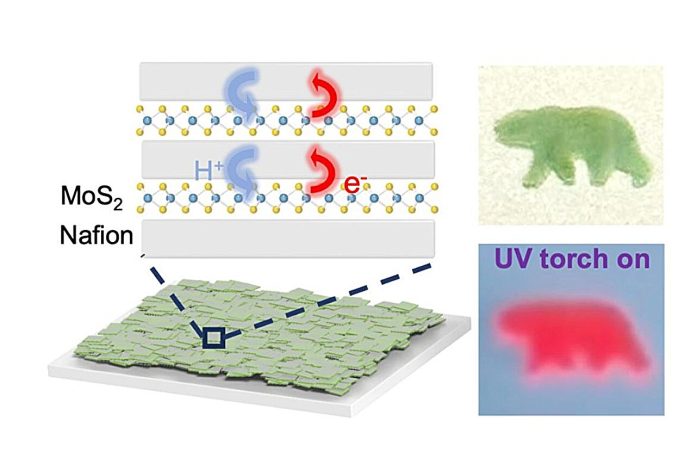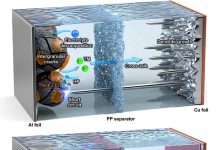
A research team at the California NanoSystems Institute at UCLA has developed a new stretchable material that emits bright light and could help usher in the next era of computing—one powered by photons rather than electrons.
Their findings, published in the Journal of the American Chemical Society, mark a step toward photonic technologies that are faster and more energy-efficient than today’s electronics.
The material is built from molybdenum disulfide, a semiconductor only three atoms thick, and Nafion, a polymer commonly used in fuel cells.
On its own, molybdenum disulfide has long intrigued scientists for its optical properties, but the ultrathin material is fragile and produces very little light.
By combining it with Nafion, the UCLA team overcame these challenges, creating a printable, large-area, and durable membrane that shines far more brightly than molybdenum disulfide alone.
Photonics—the use of light to process information—already powers technologies like fiber-optic communication, solar cells, lasers, smartphone cameras, and advanced displays.
But researchers believe its potential goes much further.
Computers that operate with light could perform calculations at speeds far beyond today’s fastest processors while dramatically cutting energy use, an issue of growing concern as applications like artificial intelligence demand ever more power.
The breakthrough came from an unusual collaboration. While most researchers who work with Nafion focus on energy applications such as batteries and fuel cells, and most who study two-dimensional semiconductors rarely explore ionomer chemistry, UCLA’s team combined expertise from both fields.
This cross-disciplinary exchange led them to layer sheets of molybdenum disulfide with Nafion, producing a material that retained the desirable properties of the 2D semiconductor while gaining flexibility, strength, and efficiency.
The layered membranes remained stable not only in air but also in water and under stretching, a remarkable feat for a material so thin. Even when made into large sheets, the membranes emitted bright light, opening the door to practical uses in devices.
In the near future, the researchers hope to apply the material to stretchable displays, chip-based light sources, and compact lasers.
Looking further ahead, it could be integrated into photonic circuits for computing. If successful, such systems would avoid the bottlenecks of traditional semiconductors and help reduce the staggering energy costs associated with data centers and emerging technologies like generative AI.
“This is an exciting example of how bringing together common materials from very different fields can lead to unexpected breakthroughs,” said Xiangfeng Duan, senior author of the study and distinguished professor of chemistry and biochemistry at UCLA. Doctoral student Boxuan Zhou served as the paper’s first author.
With its unusual mix of strength, flexibility, and light-emitting power, the new material demonstrates how clever combinations of existing technologies can point the way toward a faster, more sustainable digital future.



